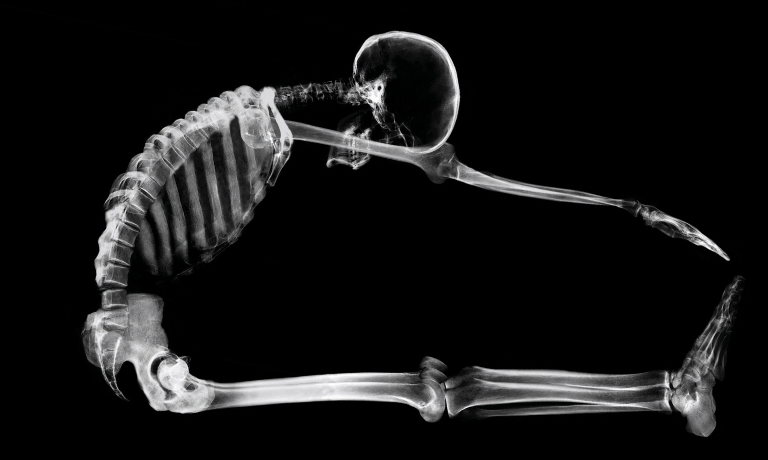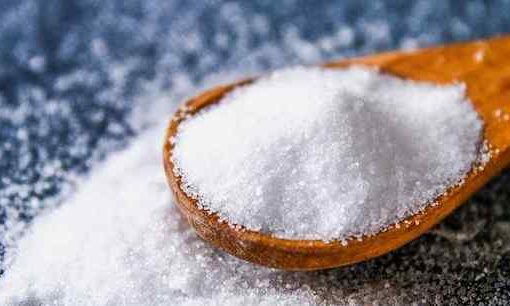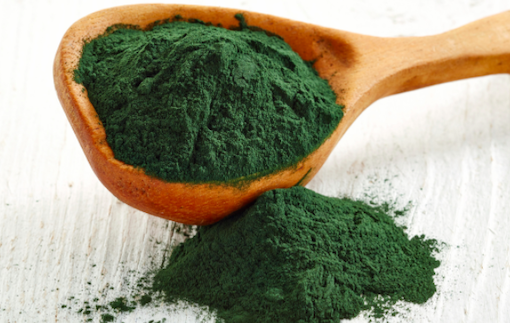
by Jack Norris, RD
Entire article is Bone Fractures among U.K. Vegans: Implications and Recommendations.
In Part 4 below:
- Vitamin D
- Calcium
- Protein
Abbreviations: CI–95% confidence interval • HR–hazard ratio • IRR–incidence rate ratio • n–number of people • SD–standard deviation
Vitamin D
One of the more obvious nutrients to consider when assessing bone health is vitamin D, which plays a significant role in calcium homeostasis.
EPIC-Oxford didn’t measure vitamin D intakes or blood levels for all the participants and was therefore not able to adjust the fracture results for vitamin D status. However, a 2011 report from EPIC-Oxford measured the average vitamin D levels of a subset of participants. Meat-eaters (n=1,388) had an average vitamin D level of 77 nmol/l (95% CI 75-79 nmol/l) while vegans (n=89) had an average level of 56 nmol/l (95% CI 51-61 nmol/l) (Crowe, 2011).
Despite the lower vitamin D levels of vegans, their average vitamin D levels were well above the 30 nmol/l threshold determined by the Institute of Medicine (IOM) to be necessary for bone health. The IOM says, “Practically all persons are sufficient at serum 25(OH)D levels of at least 50 nmol/L,” and that optimal vitamin D levels are 50 to 125 nmol/l (Ross, 2011).
EPIC-Oxford conducted a nested case-control study after 5 years of follow-up comparing the vitamin D levels of participants who had suffered a bone fracture with those who hadn’t (Roddam, 2007). The vitamin D was measured from blood samples that had been taken at recruitment and stored. The results showed no association between vitamin D levels and risk of fracture among men or women.
Based on this evidence, it’s unlikely that lower vitamin D status played a significant role in the higher fracture rate of vegans in EPIC-Oxford.
Calcium
A 2009 meta-analysis on the bone mineral density of vegetarians concluded that vegans have statistically significant, moderately lower bone mineral density than meat-eaters, but that it’s unlikely to result in a clinically important increase in fracture risk (Ho-Pham, 2009).
In 2007, a 5-year follow-up report from EPIC-Oxford found that vegans had a higher fracture rate than meat-eaters (IRR 1.30, CI 1.02-1.66) that was ameliorated upon adjusting for calcium intake (IRR 1.15, CI .89-1.49) (Appleby, 2007). Among participants who obtained ≥525 mg/day of calcium (only 55% of the vegans compared to ~95% of the other diet groups), vegans had a similar fracture rate as meat-eaters (IRR 1.00, CI .69-1.44). The study didn’t give the average calcium intake of the vegans who obtained 525 mg/day or more, but it was possible to calculate that at a minimum, their average calcium intake was 640 mg. As of 2007, low calcium intake had full explanatory power for the higher fracture rate of vegans in EPIC-Oxford.
Now let’s take a look at the relationship between calcium intake and fracture risk outside of EPIC-Oxford.
A meta-analysis of 44 cohort studies found that dietary calcium between about 800 to 1,000 mg per day isn’t associated with risk of fracture, and there’s no evidence that increasing dietary calcium within that range or higher prevents fractures (Bolland, 2015). (An exception is that calcium and vitamin D supplements have been found to help women aged 69 to 106 years old who normally have low calcium intake and poor vitamin D status; see Appendix E: Calcium and Vitamin D Supplements in Elderly Women with Low Vitamin D Levels).
Among omnivores with lower calcium intakes, there have been mixed results with some studies finding an increased risk of fracture among people with very low calcium intakes of about 300 mg/day or less (Xu, 2004).
A prospective, observational study of Koreans measured fracture rates of an older population with relatively low calcium intakes (Kong, 2017). Quartiles of calcium intake for women were 178, 314, 455, and 778 mg per day, and for men were 208, 344, 489, and 803 mg per day. After 9 years, there was no association between calcium intake and fracture risk for men or women.
An observational study from Sweden followed 61,433 women for 19 years (Warensjö, 2011). They were divided into quintiles of calcium intake (<751, 751-882, 882-996, 996-1,137, and >1,137). Calcium intakes below ~700 mg per day were associated with an increased risk of hip fracture, any fracture, and osteoporosis. Within the lowest quintile, the risk of fracture increased for every 100 mg decrease in calcium intake (first fracture: HR 1.08, CI 1.04-1.11; hip fracture: HR 1.07, CI 1.01-1.13). The paper provided a graph of hip fractures showing little change between calcium intakes of 700-1,000 mg/day, but a steady, exponential increase as intakes decrease from 700 to 400 mg/day.
In EPIC-Oxford’s 2020 report, results were adjusted for calcium intakes using a stratification method with the categories <525, 525–699, 700–899, 900–1199, ≥1200 mg/day. In Table 2, they report fracture rates of vegans compared to meat-eaters adjusted for all variables except calcium and protein (HR 1.43, CI 1.20-1.70) and for all variables including calcium but not protein (HR 1.31, CI 1.10-1.57). That the HR decreased suggests low calcium intakes might have had a small impact on the higher rate of fracture among vegans. In a sub-analysis (Table 4), they found that among participants with calcium intakes ≥700 mg/day, vegans still had a higher risk of total fractures (HR 1.50, CI 1.12-1.99). In private correspondence, Dr. Tammy Tong of EPIC-Oxford said that preliminary testing of the results showed that the higher fracture rates of vegans weren’t driven by the extreme categories of calcium intake.
Putting all the research together, it’s unlikely that low calcium intake accounts for much of the fracture rates among vegans, but it’s prudent for vegans to ensure a dietary calcium intake of 700 mg/day, which is the United Kingdom’s recommendation for adults (Theobald, 2005).
I hesitate not to recommend the full U.S. RDA for adults of 1,000 or 1,200 mg (depending on age and sex), but the data indicates that amount isn’t necessary. There are also concerns about supplements increasing the risk of artery calcification, although these concerns probably aren’t relevant to people on the lower end of calcium intakes (more info in Safety of Calcium Supplements).
Protein
Vegans tend to have lower protein intakes, both in absolute amounts and as a percentage of calories, and the impact of protein on bone health has been a source of controversy in the vegan community.
Shams-White et al. (2017) explain that early studies suggested that higher protein intakes, especially animal protein, increase urinary calcium excretion. While it was originally thought that this excreted calcium comes from the demineralization of bones, research in the 2000s showed that this calcium comes from the diet by way of increased absorption. Because protein is a major component of bone, others have speculated that increased protein can help prevent bone loss due to aging.
A meta-analysis of 20 prospective observational studies and 16 randomized controlled trials found no significant association between dietary protein and fracture risk (Shams-White, 2017). There was some evidence that more protein reduced bone loss of the lumbar spine among older adults. The study was supported by the Egg Nutrition Center and Dairy Management Inc. who were said not to have had any role in the design, analysis, interpretation, or presentation of the data or the results.
One study from France (included in the meta-analysis by Shams-White et al.) found that among women with calcium intakes lower than 400 mg/day, protein intake, which they suggested was mostly animal protein, increased the risk of fracture (Dargent-Molina, 2008).
In EPIC-Oxford’s 2020 report, a stratification method was used to adjust for protein using categories of <13%, 13–14.4%, 14.5–15.9%, 16–18.0%, and ≥18.1% of energy. In Table 2, they report fracture rates of vegans compared to meat-eaters adjusted for all variables except calcium and protein (HR 1.43, CI 1.20-1.70) and for all variables including protein but not calcium (HR 1.39, CI 1.16-1.67); that the HR decreased suggests low protein intakes might have had a small impact on the increased rate of fracture among vegans.
Given that the protein adjustment was based on the percentage of calories and that vegans in EPIC-Oxford have a significantly lower average caloric intake than meat-eaters, the protein adjustment might not have captured a higher rate of fracture among those with much lower absolute protein intakes. However, in Table 4, all participants with dietary protein intakes above .75 g/kg of body weight were compared and vegans still had a higher rate of fracture (HR 1.52, CI 1.24-1.87).
Based on this evidence, it’s unlikely that lower protein intake played a significant role in the higher fracture rate of vegans in EPIC-Oxford.
Coming up in Part 5:
- Vitamin B12
- Vitamin K2
- Iron
References



